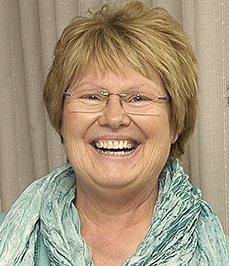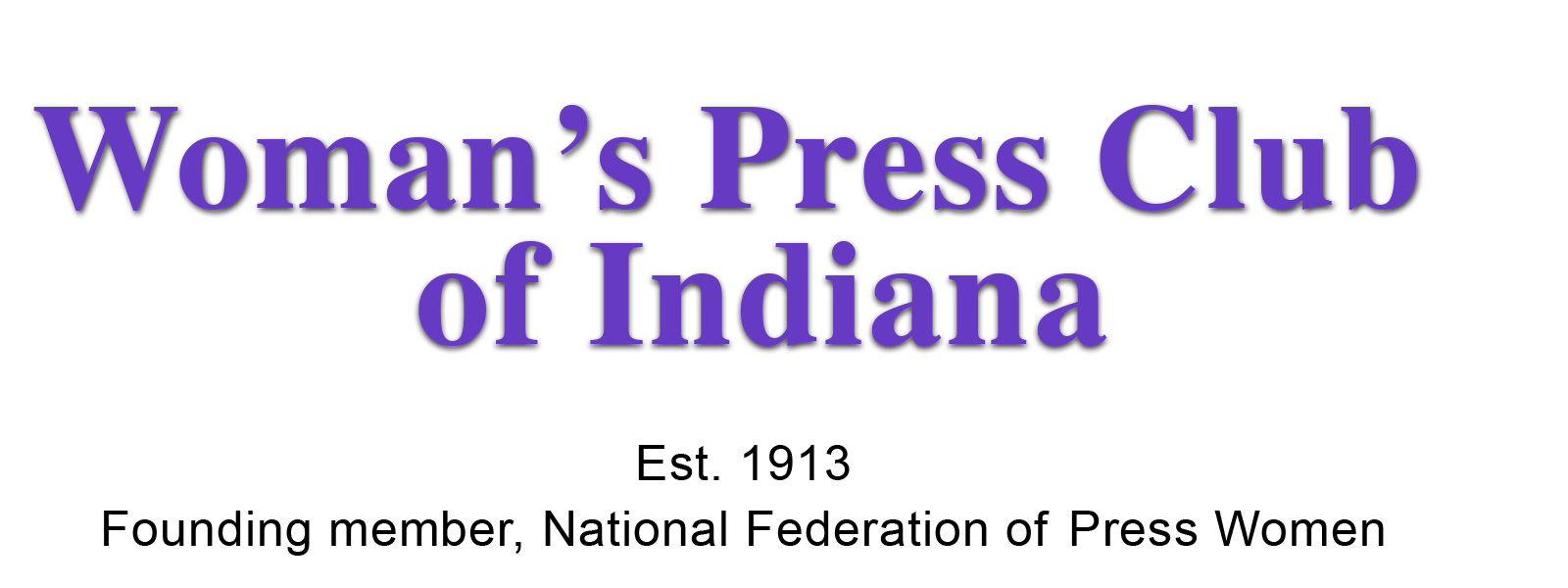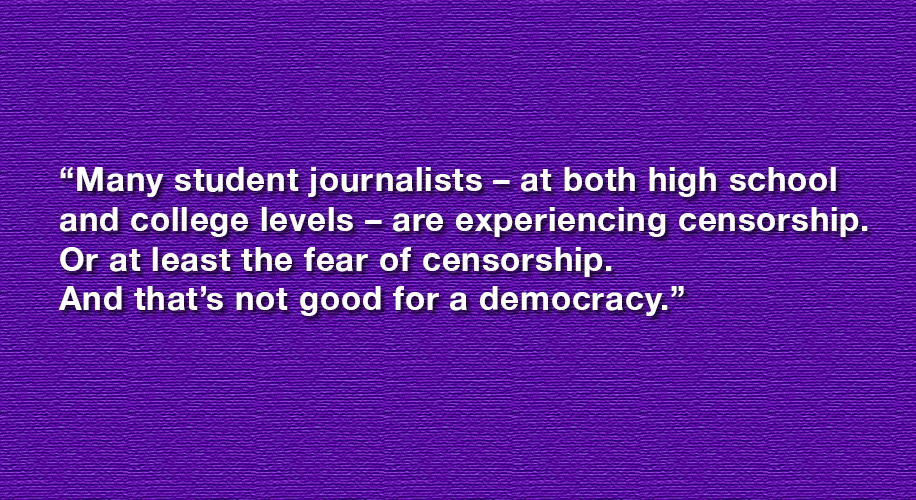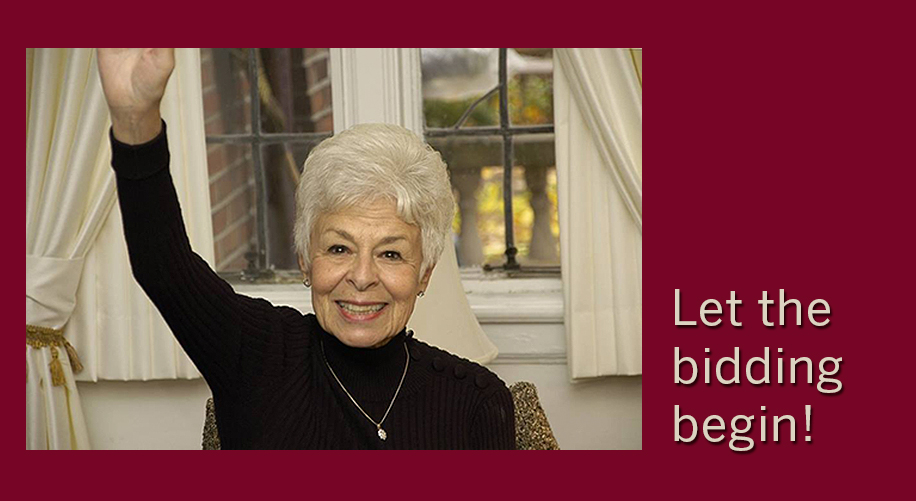 WPCI secretary Marion Garmel submitted this report from the National Federation of Press Women annual conference.
WPCI secretary Marion Garmel submitted this report from the National Federation of Press Women annual conference.
As director of the Indiana and national High School Communications Contests, WPCI vice president Elizabeth Granger (pictured in this file photo) was in charge of the Saturday luncheon that celebrated high school contest winners at the convention.
But no winners showed up. So Granger delivered a stunning speech about the need, in these troubled times, for high school journalism education and for training young people to become the journalists of the future. Without them, who will safeguard our right to know? She was the only speaker who got a standing ovation. Congratulations, Elizabeth.
Here is the text of Granger’s speech:
Scholastic Journalism Matters
by Elizabeth Granger, Director
NFPW High School Journalism Competition
Speech delivered at the NFPW high school journalism luncheon
Sept. 9, 2017 – Birmingham, Alabama
Good afternoon. Thank you for joining us as we celebrate high school journalism. We do have cause to celebrate. A look at our national winners shows remarkable talent in today’s teens. And it shows unwavering loyalty to the tenets of our profession. We see teen journalists who are curious, competent, enthusiastic, talented, tenacious, dependable. They are intelligent but also have common sense, are serious but also enjoy the fun in life, are leaders as well as team players who pitch in to do whatever has to be done. And ethics? At the top of their list.
Many of us remember with fondness and elation the student luncheon at last year’s conference in Wichita, when more than a dozen high school students and their families and advisers joined us. Alas, this year is not a repeat. None of our winning students was able to join us today.
Parker Primrose of Allen High School in Allen, Texas, planned to be here. He’s the co-winner of this year’s Best of the Best honor, for a sports story titled “Tackling Concussions.” The category judge wrote:
This is what high school journalism, or journalism in any sense, is all about.
On Monday Parker emailed me his regrets along with profuse thanks for this honor. He also sent his personal thoughts about journalism. He said:
Journalism allows me to feel like I am a part of something bigger than myself. By keeping others informed about the latest news and events and by providing thoughtful commentary and opinions, I believe that I am able to have a direct impact on the well-being of my community. I feel it is the responsibility of journalists today to bridge the polarization of American society through reporting stories that cover both sides of issues and allow readers to understand the opposing point of view. Despite what some may say, journalism is not a dying career path. On the contrary, it has never been more necessary than it is today and will play a key role in deciding the future of our country and the world.
I’d say he’d get a lot of agreement from those of us in this room.
Lilly St. Angelo of Carmel High School in Carmel, Indiana, who took first place for double-truck layout, said:
The world opened up to me when I first got to be a reporter for my school paper. The intimacy of sharing people’s lives with other people gave me a sense of purpose and responsibility like nothing I’d ever had before.
And Justin Sweeney of Kirkwood High School in Kirkwood, Missouri, who captured first place nationally in the editorial category, said this:
There is a hidden power inside each staff editorial. It carries more weight and can create more of a difference than any other style of writing. For this reason, I fell in love with editorial writing.
A sports story. A layout. An editorial. Three distinctly different pieces of student journalism, but all first-place national winners in this year’s high school competition.
Altogether, we had 23 categories with 1,292 electronic entries at the affiliate level of judging, which led to 168 entries at the national level of judging. One hundred eighteen students won 88 national awards for first, second, third and honorable mention. And then, the 23 first-place entries advanced to the Best of the Best judging with the Best of the Best award.
But any of our high school entries could have been squelched if they’d been produced in different schools. It’s called censorship. It’s always been around, and in some arenas it’s growing.
You may remember that I was a high school student publications adviser for close to 30 years. Yes, there were moments when we did feel the ire of administrators or students or parents.
For years I had a principal who really was a strong supporter of student journalism. Sometimes she’d even ask me if a student should be allowed to do this or that. But when my editor published a story about uncollected student activity fees – uncollected by the school – the principal came to me and, with a soft voice dripping with venom, told me to “get that girl graduated and get her out of here.”
And then there were the students who learned we were doing a feature about drug use, focusing on a student’s drowning that had been caused by huffing. They screamed at my journalists, insisting the victim wouldn’t want us to cover his death. What they didn’t know was that the victim’s parents and brother were encouraging my staff to do the story. It became a United Way Casper award winner.
There was even that time when one of my journalists wrote a column insisting that bowling is not a sport, and a student bowler’s grandmother came in to complain to the principal. She brought her bowling ball with her.
But for the most part, my student journalists did enjoy freedom of the press pretty constantly.
I think we might have been in the minority.
Many student journalists – at both high school and college levels – are experiencing censorship. Or at least the fear of censorship. And that’s not good for a democracy.
That’s what New Voices legislation asserts.
This three-pronged initiative, with strong support from the Student Press Law Center, aims to benefit student journalism in three different educational environments. It was inspired by the John Wall New Voices Act of North Dakota, which passed unanimously and became law in 2015.
Did you catch that? It passed unanimously in its state legislature. Both parties, on the same side.
The first prong of this bill restores the Tinker standard of student expression to public high schools. Remember Tinker v. the Des Moines Iowa Independent Community School District? It didn’t even involve journalism. It dealt with high school and junior high school students who wore black armbands to school to protest the United States’ involvement in Vietnam. Nevertheless, the Supreme Court’s decision in Tinker also set the legal standard for student free expression rights in newspapers, yearbooks and other publications. The 1969 Tinker decision protects student speech unless it is libelous, an invasion of privacy or creates a “clear and present danger” or a “material and substantial disruption” of the school.
Then came the ‘80s and the infamous Hazelwood decision in 1988 that allowed administrators to justify their censorship of legitimate speech in curricular settings.
In took away many of the rights Tinker had provided.
But two years ago, North Dakota stepped up and returned to the Tinker standards. North Dakota student journalists now have New Voices protection in their public high schools.
I’d like our North Dakota members to stand. Right now you represent the entire state to me, and I thank you. Please remain standing, because North Dakota was just the start.
Join them in standing if you’re from Iowa, Kansas, Massachusetts, Arkansas, Colorado, Oregon, California, Maryland, Illinois, Pennsylvania, Nevada, Vermont or Rhode Island.
I thank you, too. (Motion for them to sit down.)
This is an impressive start, because many of us didn’t think it would happen. But we’ve got more states with more student journalists to protect.
Before I go further, however, I now ask members from just these states to stand again:
North Dakota, Oregon, California, Maryland, Illinois, Nevada, Vermont, Rhode Island. Your states also protect student journalists in public colleges from dangerous court interpretations that apply Hazelwood to higher education.
That’s part 2 of the New Voices initiative.
Part 3 will extend these privileges to private colleges.
So, again, we’ve got more states and more student journalists at both the secondary and college levels who do not enjoy New Voices protection. Additional states are talking about this. Some have introduced legislation, and then voted it down. Like in Indiana – where I live.
Remember those Kansas teens who exposed their principal’s lies about her credentials this spring? It led to her resigning from a job she didn’t deserve to have. We applauded those students. But I’ve heard that in Indiana, some were aghast that teens could cost adults their jobs.
And then there are states that apparently haven’t even thought about this.
We are a national group of journalists. I’d like to see us look at all states in our nation, beginning with our own.
Journalism matters, perhaps now more than it has in a long time. Parker Primrose, our Texas Best of the Best student, is right. Despite what some may say, journalism is not a dying career path. On the contrary, it has never been more necessary than it is today and will play a key role in deciding the future of our country and the world.
Scholastic journalism matters. This is the incubator for the kind of professional journalism that must go forward.
I ask you to take a look at New Voices. Its website address* is on the screen. Find out what your state is doing. And add your powerful voices to those new voices that will be the next generation to guard America’s democracy.
Thank you.




